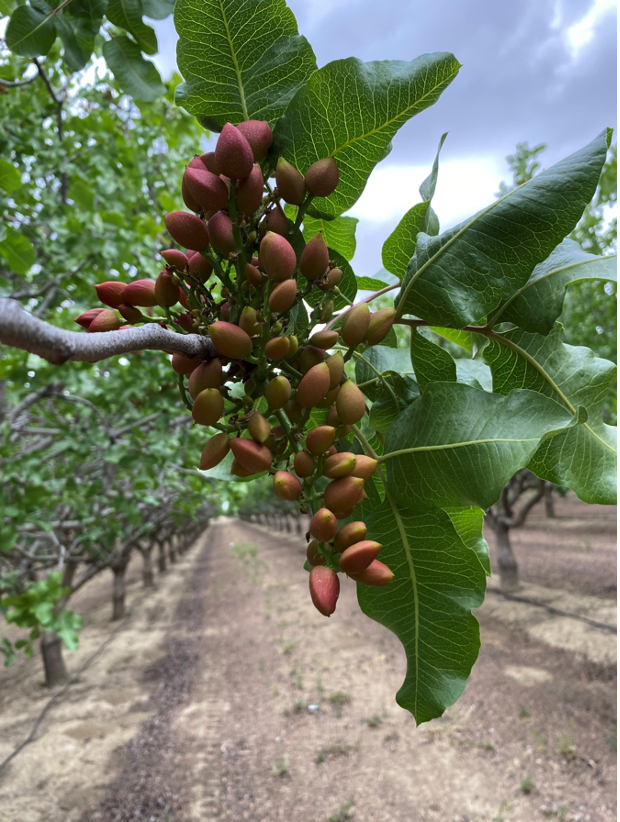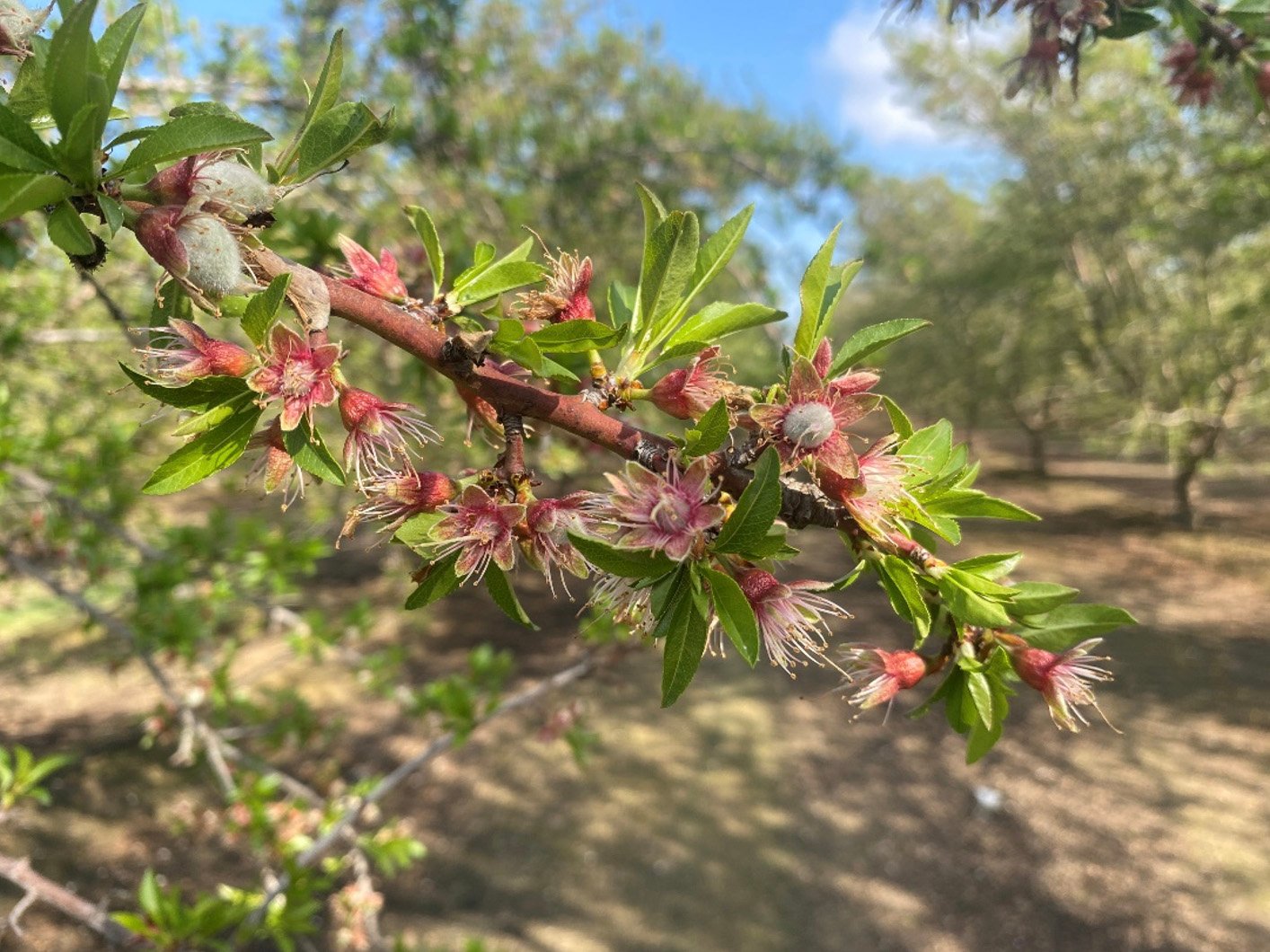Early Vine Management in California Wine Grapes
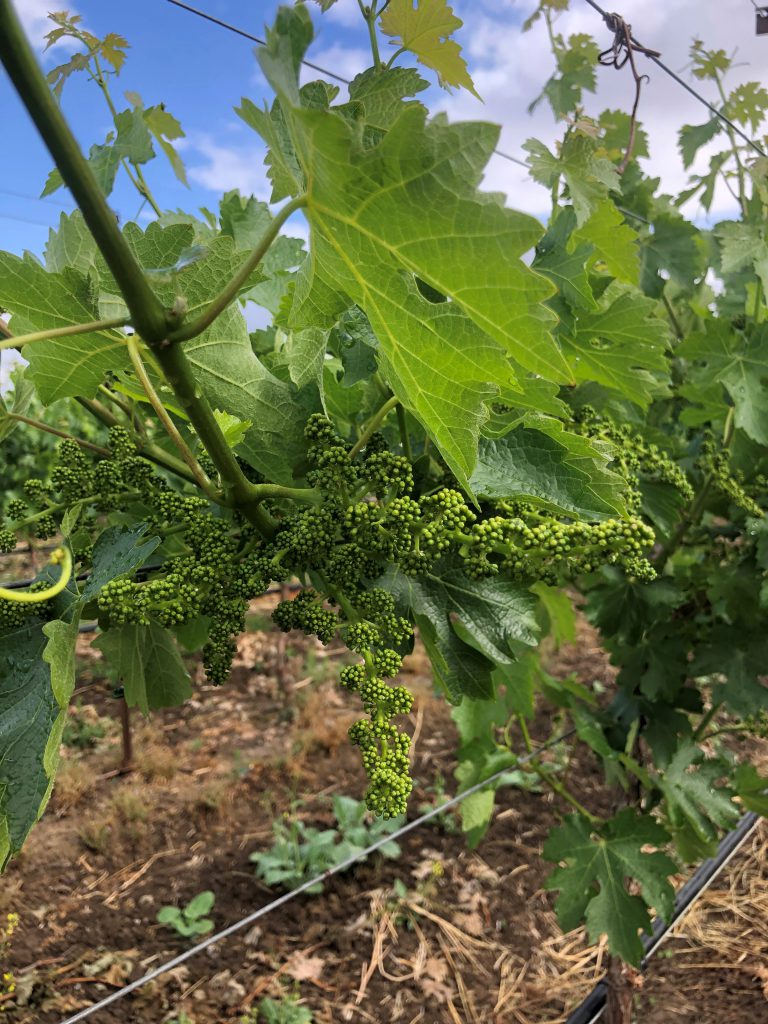
California’s wine grape production is as diverse as the soils and varieties that we grow on with no two ranches alike. Regardless if you are growing a vintage or if you are in the bulk market, early vine management follows the same criterium of minimizing crop stress and optimizing mass flow for proper nutritional uptake and healthy plants.
Effects of Overwatering
When the term stress is introduced into a conversation with wine grapes we immediately jump to the conclusion that we are talking about dry field conditions. It is true that I am trying to mitigate this type of stress during bloom and early vegetative development but the more common stress I am fighting to reduce is anaerobic soil conditions from being too wet. With excess moisture within the rhizosphere of the vineyard we are not fighting a lack of water but the lack of oxygen. This lack of oxygen within the soil profile will directly corollate to reduced transpiration rates.
Excessive water from rain and even irrigation practices can stager and slow down the development of the canopy and this year’s bloom. Irrigation theories vary from ranch manager to ranch manager with some wanting to apply just a little water but on a more frequent basis and others waiting to apply larger applications of water. These strategies are highly dependent upon the vine age, variety/root stock, soil and climate but the one factor that brings all of them together is that no irrigation can exceed the field capacity of that soil without leaching.
An example that I bring up often is silage corn. Strong healthy stands of corn are commonly found in areas that are properly fertilized and irrigated. Weaker stands with reduced height and bushels/acre are found usually at the ends where water stands. Why isn’t the corn on the ends with the same fertilizer program not the same height? I mean they have all the water they could ask for. The answer is that oxygen is the limiting factor throughout the growing season and plants with limited or reduced soil oxygen levels have reduced transpiration rates and low yields.
Monitoring Soil Tension to Optimize Growth
In the example below two applications of water were applied. The first application of 10 hours (10 gal/vine) met the field capacity of the soil. This vineyard needed roughly 6 hours with 4 hours of the irrigation actively pushing water past the 36” soil horizon. A second application of almost 18 hours was applied the next day leaching for the entire time. Once the irrigation was turned of the tension increased to field capacity at 2 kPa. Transpiration rates were regulated for 6 to 7 days after this application of water until there was enough of a soil moisture depletion to allow oxygen to enter the pore space of the soil. Root activity and transpiration rates of each soil horizon increased once the 10 kPa threshold was crossed. For the 36” soil horizon this occurred on May 21st. For the next irrigation this grower will be applying 8 hours to rehydrate the soil and minimize leaching.
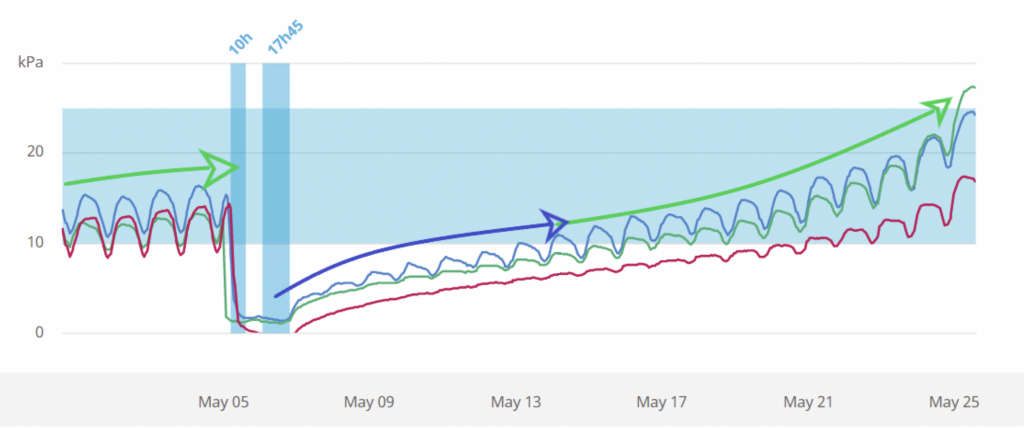
A systematic approach to building a healthy canopy is to match the vine’s demand for water. In areas with high rainfall and wet soil profiles it is common to see the top 12” of soil being the most activity with relatively quiet root activity deeper until the canopy matures. To minimalize the potential of stress from overwatering this grower applies roughly 4 to 5 hours of water (4-5 gal/vine) to match vine uptake and eliminate the issue of exceeding vineyards field capacity for water. As the canopy increases in May we begin to see more activity in the deeper profile and more water can be applied. Vine health would have been compromise with excess water during this time.
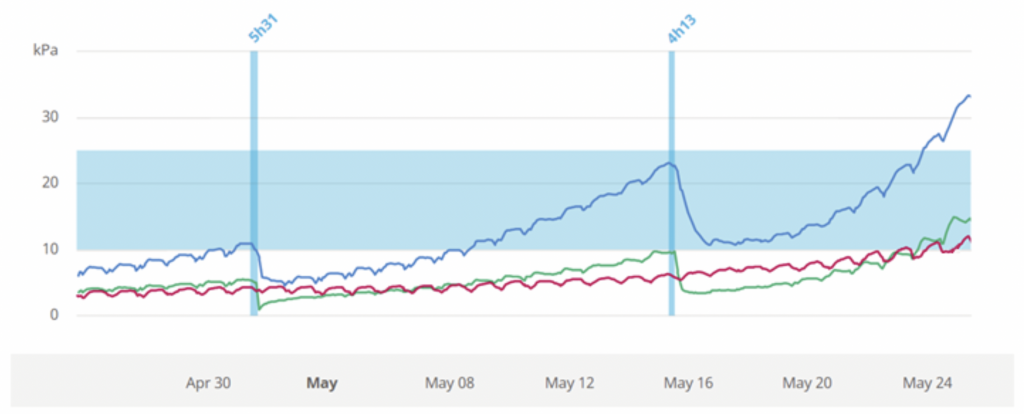
Water Savings Opportunity
Regardless of what you grow and how you irrigate you can never exceed a field’s soil holding capacity without leaching. Vines that “just aren’t picking up” can be due to excess water and holding off on water can be the best recommendation I can give. For the vines below on sandier soil we know that A) It’s been hot in the Central Valley and B) yes the vines are going through bloom. When compared to an ET based model we should only be slightly wet but this model is compromised from the habitual overwatering that has reduced the vine’s transpiration rate. Fact: Excessive water will compromise your transpiration rate of your plants. As the vines fall farther and farther behind the model’s kC value does not compensate for the reduced transpiration rate. With each long irrigation water is pushed down to 3 feet and brings the field back to field capacity. Analyzing each irrigation the soil within the top 12” is fully rehydrated after just 3 to 4 hours of water. Moving into the heat it would be unfathomable for a grower to just cut off the water for 3 weeks for the tension to increase to above 30 kPa. In this case I would highly advises irrigating once per week for 4 to 5 hours until transpiration rates are restored and more water is needed.
 Article by: Travis Goldman, Irrigation Advisor
Article by: Travis Goldman, Irrigation Advisor

